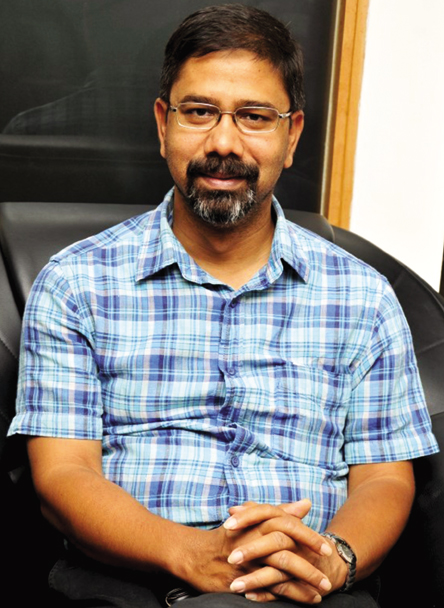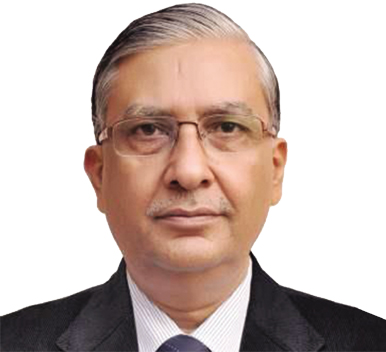
MD, BMTC

MD, BMTC
Information technology has helped tame indiscipline and corrupt practices in BMTC, says Managing Director Anjum Parwez during a conversation with Kartik Sharma of ENN
Tell us about the major IT initiatives in the Bangalore Metropolitan Transport Corporation (BMTC).
The BMTC employs a total of 35,400 people, out of which 32,000 are drivers and conductors. As a common practice, these drivers used to bribe officials to get their leaves sanctioned. Such corrupt practices were getting ingrained in the system. It was then that we felt the need to have a system to curb this menace. We put in place the checks using Information Technology.
Also, we were facing problems in figuring out the number of employees who could be sanctioned leave during a given period of time. It was seen that 7-10 percent of employees would go on leave simultaneously. Hence, the system was empowered with the authority to sanction leaves, leaving no gaps for bribes. Ever since, the automated system records information on leave credits related to particular employee accounts.
An SMS and a printed receipt are generated showing the grant of permission and credits for the leave. Not more than eight percent of the total staff can be granted leave per day, with a flexibility of two percent in case of emergency, the call for which is taken by the depot manager.
The staff can view the leave credits using a Radio Frequency Identification Devices (RFID) card, wherein the provi- dent fund number is their ID. The entire RFID-based kiosk system has been developed by Bosch.
How do the workers acquaint themselves with the IT system?
In BMTC, the information technology is primarily being used to manage the leave sanctioning system. The minimum eligibility for recruitment for the BMTC staff is matriculation. To make the system more user-friendly, it is being developed into a bilingual one. There is almost no need for typing, as most functions have a drop-down menu. Even then, if someone gets stuck, fellow employees can always come to his rescue. We are also working on linking the provident funds and medical claims to the system.
In BMTC, the information technology is primarily being used to manage the leave sanctioning system.
Any mobile function is also being introduced, such as Android apps?
The idea of mobile function has also been thought of, and we plan to introduce Android apps in the near future, so that if any of the staff members is unable to come to the depot, he can apply for leave via mobile. As of now a staff has to take depot manager’s permission to take leave from outside.
How much does it cost to put in place this infrastructure, and what is the deadline for implementation of this system?
 On the 40 depots, each kiosk machine cost `4 lakh. It includes hardware, software and maintenance cost for three years. Thus, the total cost would sum up to `160 lakh for the entire system. It is not that much if we consider the system’s benefits. This has increased the efficiency of BMTC. It also gives us the entire picture of the leaves and duty generation. In all, it took six months to come up with the system.
On the 40 depots, each kiosk machine cost `4 lakh. It includes hardware, software and maintenance cost for three years. Thus, the total cost would sum up to `160 lakh for the entire system. It is not that much if we consider the system’s benefits. This has increased the efficiency of BMTC. It also gives us the entire picture of the leaves and duty generation. In all, it took six months to come up with the system.
How is the IT system managed in BMTC?
When I joined the Corporation, there was no dedicated person managing the IT wing. Recently, we created a position of the Director-IT. A team headed by Director-IT has been raised to manage ll the IT operations of the organisation. Kumar Pushkar is the new Director-IT managing the wing. Now, planning and operation work have been bifurcated.
Tell us about the Intelligent Transport System.
An Intelligent Transport System (ITS) has three major components – Global Positioning System (GPS), Electronic Ticketing Machine (ETM) and Public Information System. About 7,000 buses will be tracked by this GPS system. This is going to be the biggest ITS project in the urban transport sector in India. Using all these systems, data will be sent to the data centre. This will facilitate real time tracking and also provide information about real time revenue generation. Then, we have the facility of two-way communication with the driver also. If the driver wants to send messages to the control centre, he can do it easily in an effective manner. All this is connected to a strong backend. We have started a pilot project in Depot No. 2 for the ITS. For public information system, we will put up displays on major bus stops, so that people can have knowledge about bus schedules.
Then all such data will soon be made available on mobile applications for further convenience. Thus, the real time movement of buses can be tracked. It will also give location of bus stops through a location finder tool in the app. Soon we will link MYBTMC.com to this real time system. There will also be apps for three different platforms Windows, Android and iOS.
How is the cost structure being handled?
If we consider the leave management system, there is no one-time payment to the vendor. The liability of maintenance lies with the vendor, as there is a three year monthly payment mode. Similarly,for the ITS system,it is purely based on EMI structure for aperiod of five years. A service-level agreement would be done for ETMs and GPSs. There will also be penalty clauses and all the responsibility of the functioning will be that of the vendors. The payment is linked to performance. ETMs will be used to stop reissuing of tickets and this will also help improve revenue to 5-7 percent.
These days, we hear a lot of cases about women’s harassment. Has BMTC taken any preventive steps?
We have done a lot of work on it. Nearly 1,000 CCTV cameras will be installed in buses and bus stops. 500 cameras have already been put on and running perfectly. Our main purpose is to stop all criminal activities. This will be deterrent for mischief. For example, I can say that people now think twice to sit on ladies seat. BMTC is the first organisation in the country to have so many cameras. Acceptability in the Bangalore city is very high so there is least chance of vandalism. Soon Wi-Fi connectivity will also be made available in some air- conditioned buses on the airport route. Basically we want that the entire experience of bus traveling to change.
Tell us about the special e-Bus services.
First-ever 12-metre electric bus is on trial run for the past three months and people have liked it. There are three important benefits of this bus – zero emission, and savings on diesel maintenance. On an average, every person in Bangalore spends about 286 hours per year in traffic. So, the saving of oil for these hours will be a crucial benefit. Moreover, electricity rate is much stable and well regulated, thus saving the operation cost over buses running on diesel. Another aspect is the ambience of these electric buses, which has out classed other buses. The battery technology has also improved immensely in the recent past. It means that charging of just eight hours can run buses for 280 kilometers. The e-bus got a huge media coverage and a lot is already happening towards its brand promotion.
‘ We are going to launch smart cards… These smart cards could be used in both BMTC and Bangalore Metro by linking the two. The linking of bus and metro services will…be very useful for the travellers ’
Have you made any efforts to connect Bangalore Metro Rail with BMTC?
Yes. In fact, it is one of our major initiatives. We are going to launch smart cards in BMTC. These smart cards could be used in both BMTC and Bangalore Metro by linking the two. The linking of bus and metro services will make a healthy relationship and be very useful for the travellers. The buses will directly reach metro stations under the second phase of metro. At the major bus stands, we are putting up skyways between bus and metro stations to build up the connectivity. The infrastructural cost can be shared between metro and BMTC. With the launch of the smart card, we will also try to do away with the paper tickets as far as possible.





















